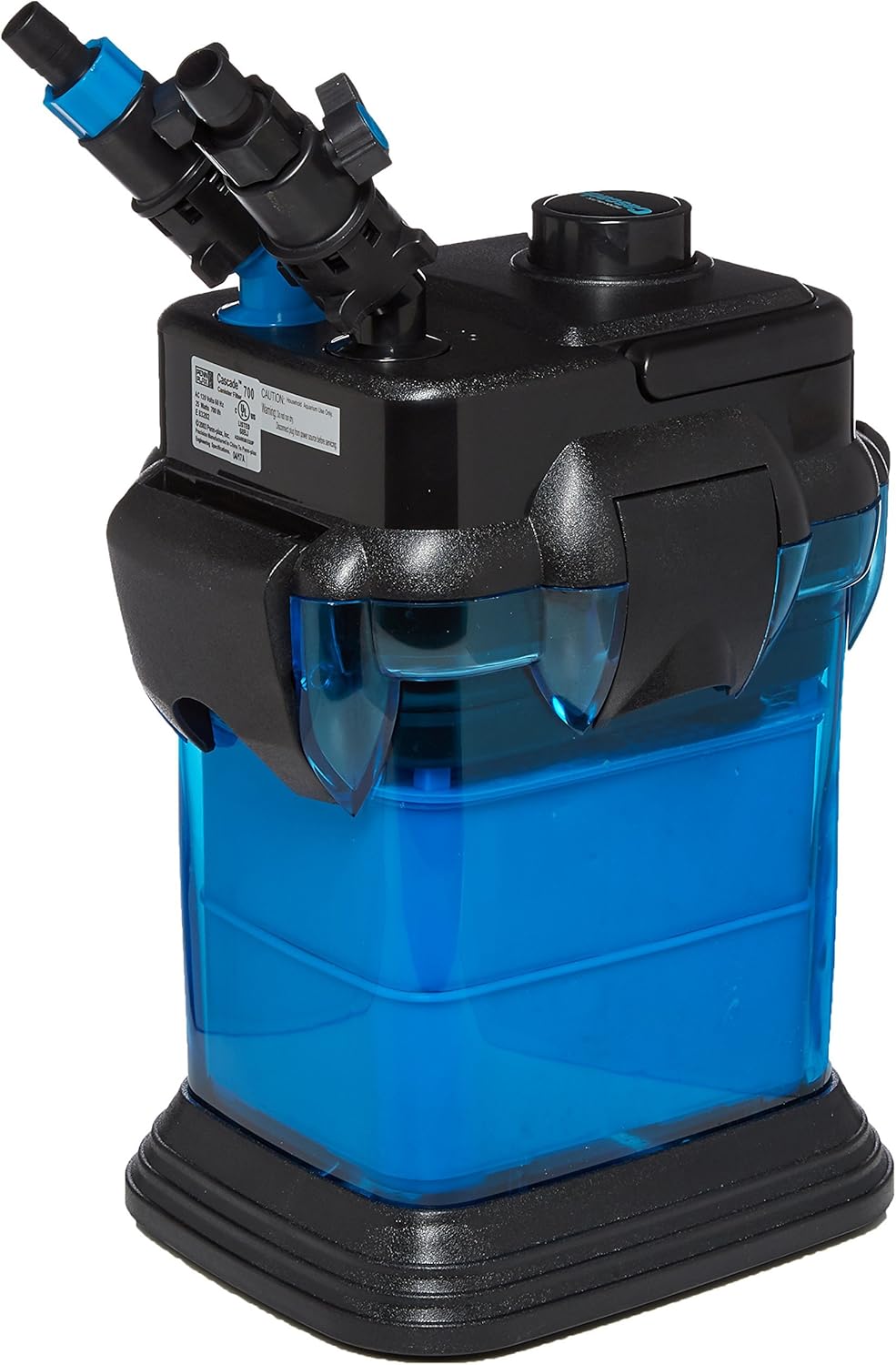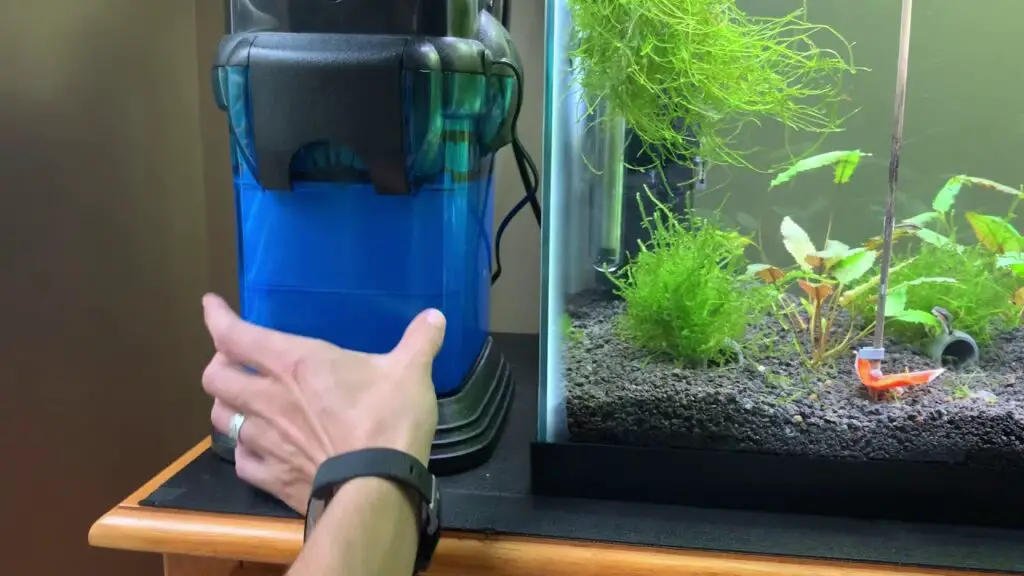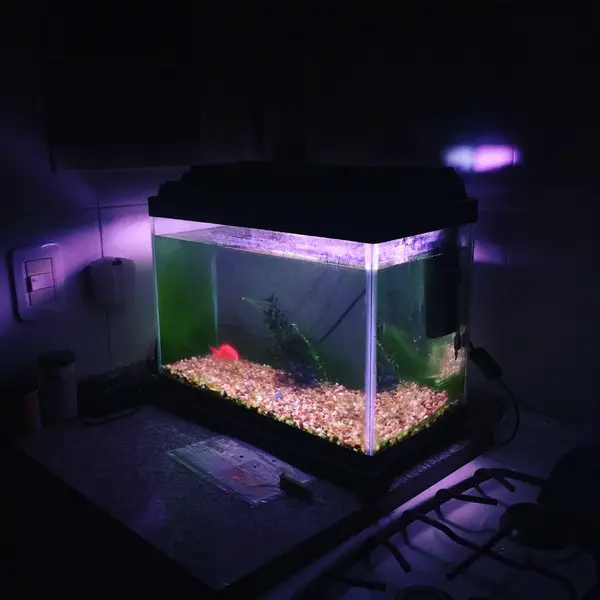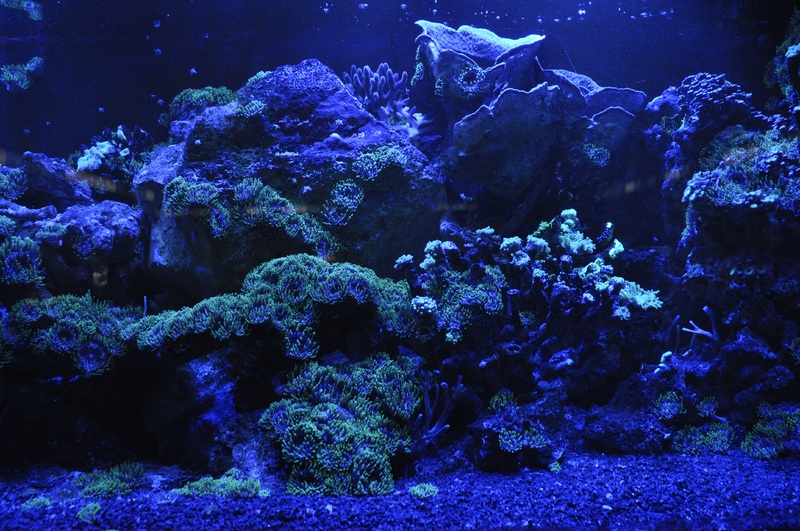When setting up any kind of aquarium for the first time, you must make sure that you install a working filter. A cascade filter is just one type that you will likely come across during your search for the best possible fit, and in this guide we’re going to be taking a look at the Penn Plax Cascade Canister Aquarium Filter.
A popular choice amongst aquarium owners, this canister filter is widely available on Amazon as well as directly through pet stores and other suppliers. But what is it that makes this canister filter so popular with tank owners everywhere? Is it easy to use? What are some of its main features, and could it really make a difference to the way you set up and use your fish tank?
Before you go ahead and buy the product, let’s take a look at a few of the features and see whether or not it’s going to be the best fit for you and your fish, as well as any plants or other tank critters you may have lurking about!
Penn Plax Cascade Canister Aquarium Filter: An Overview

Penn-Plax Cascade 700 GPH Canister Filter
The Penn Plax Cascade Canister Aquarium Filter comes in a few different styles, however, today, we’re going to take a look at the entry level option, which is the CCF2UL Cascade 700, which is built for most home aquariums in need of a filter.
The Penn Plax filter comes with tons of features which aim to help filter out nasty bacteria and particles. This particular filter has a big capacity in the main tank, which means you shouldn’t need to flush it out or adjust it too often.
Here are a few of the main features this product offers:
- Rotating valve taps, which allow you to manage the flow with ease, regardless of how your tank is positioned.
- Enough power and capacity for tanks with volumes all the way up to 65 gallons – this system boasts 185 GPH.
- A filter system that can be used in both freshwater and standard marine tanks, meaning that it’s one of the more flexible options out there.
- It’s easy to set up with its own primer button, meaning all you have to do is press to get started.
- It’s extremely customisable. This system comes with its own tubing bar, necessary filter media and large baskets, as well as a spray bar. There’s also a handy directional spout and all the tubing you’ll need.
Of course, there are filters out there from the Penn Plax line which are lower and higher in GPH, meaning you may wish to take a look at the wider line if you have a tank that’s at a particular volume.
What we like about the Penn Plax series is that they are remarkably easy to set up and get going. These are user-friendly button-press systems which are likely to appeal to beginner tank owners who have larger capacities but don’t really know what to do with them!
Reviews for the 700 are generally very positive. Don’t just take our word for it – take a look at what verified buyers have to say via pet stores online as well as through Amazon. As they are likely to be in the same boat as you, it’s always a good idea to take a look at what other aquarium owners think.
How do you set up a cascade canister filter?
Setting up a cascade canister filter for the first time can be quick and easy, but it all depends on the system you’re using. The Penn Plax 700 we’ve considered here is amongst the simplest to get going with right away.
However, here are a few general tips to keep in mind regardless of the brand or version or cascade canister filter you are thinking of using.
- Try and position your filter so it is comfortable and easy to access. Generally, a maximum of around four and a half feet below your tank is a good spot.
- Then, you should make sure that your tubes are straight and are free from kinks, and that it can easily get into your tank from the filter without strain.
- Start by inserting any media baskets you may have available and install your media. Generally, going mechanical first is a good idea, before moving on to foam, with the thickest to the finest in that order. This will make sure that your filter gets rid of the finest particles in the order you demand.
- Then, take a look at any media that’s biological which you are going to want to install. This isn’t an essential step; it depends purely on how you choose to set up your own tank and your own filtration regime. Chemicals should follow this, meaning if you have granules, make sure to layer them in a filter bag if you can.
- Then, make sure to attach the intake valve up to the tank, and your hose to the filter, clamping the intake valve shut. Then attach to your tank’s intake as per instructions on your filter and aquarium. This may differ from model to model and scenario to scenario.
- Then, do the same for the output side of things. You probably won’t need to go as far as the bottom of the tank for this.
- Once all is secure, power on – and make the most of the lovely filtration and added features your filter comes with!
How do I clean my Penn Plax Cascade canister aquarium filter?
The best and most efficient way to clean your Penn Plax filter may vary from one model to the next. Therefore, we must advise you take a look at online support from the manufacturer directly for the best results. You should also have a care guide supplied with your filter as standard.
Alternatively, why not watch the following video for some tips and ideas?
Are canister filters better?
Many aquarium owners prefer canister filters to other types simply because they are more thorough, and they tend to offer better results than other systems. They are also very versatile, and work well for freshwater and saltwater tanks.
However, it is worth noting that canister filters can be a little complex to set up and manage, as well as to clean out. Therefore, a beginner may do best looking for an alternative, at least to begin with, before they learn more about how filtration works, and are ready to see the fantastic results that these systems can bring to their tanks.
You really will be able to see the difference in your water the moment you set up your canister filter for the first time. It’s hard to believe just how many nasty particles water can hold over time – especially when you have a variety of wildlife living in the tank!
How long do canister filters last?
Providing that you look after your canister filter well, there are no reasons why you won’t be able to run them for years and years.
However, it does also depend on the quality of the canister you are using. If you are using a filter that’s poorly or cheaply made, it will naturally burn out sooner. Check for lifetime guarantees and warranties, too – as these will give you a clear indication of what to expect for the best.
That’s why we think the Penn Plax range of canister filters stand apart from the pack in the best possible way. They are super reliable and extremely well made. You only have to take a look at a few verified buyer reviews to see this in action!
How do I choose a canister filter?
There are a few things you should always keep in mind when it comes to looking for the best canister filter to fit your given aquarium or tank.
- Make sure that you choose a canister filter that’s best for your tank capacity or size. The Penn Plax 700 above, for example, is ideal for anything up to 65 gallons in volume!
- Make sure to look carefully at the various pieces of filter media that come with the system, too. These will allow you to start planning ahead. On the whole, providing the filter has at least the protective mechanical media inside, you are largely good to go.
- Take a look at the flow rate, too. If it’s slower than you expect, then your water quality is going to suffer. Again, this is important for judging which filters are going to fit your tank size the best.
- Finally, again, you should always shop with a reputable brand, or at least buy a model that is clearly of fantastic quality and a durable build. You’re going to want / need a filter that lasts years of happy use, not something expensive that is going to break within a few weeks of you starting to filter out your water!
We hope you’ve found our guide to the Penn Plax 700 useful – however, do take a look at the company’s wider range, too.
SOURCES



